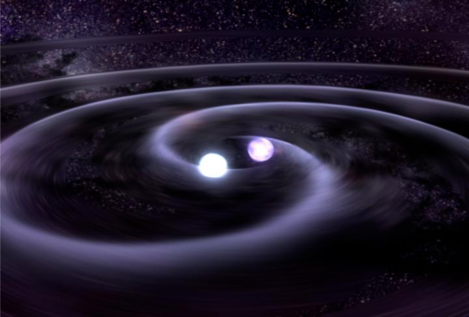Visualize a star two times the mass of the Sun taken and crushed to the size of Manhattan. The outcome would be a neutron star, one of the densest entities in the Universe, surpassing the density of any material located naturally on Earth by a factor of tens of trillions.

Image Credit: NASA/Goddard Space Flight Center.
Neutron stars are unusual astrophysical entities in their own right, but their supreme densities may also permit them to operate as laboratories for exploring vital questions of nuclear physics, in settings that could never be replicated on Earth.
Owing to these unusual circumstances, researchers are still unaware of what exactly neutron stars are composed of, their so-called “equation of state” (EoS). Establishing this is a key goal of modern astrophysics study.
A new slice of the mystery, constraining the variety of possibilities, has been exposed by two scholars at the Institute for Advanced Study (IAS): Carolyn Raithel, John N. Bahcall Fellow in the School of Natural Sciences; and Elias Most, Member in the School and John A. Wheeler Fellow at Princeton University. Their research efforts have been recently detailed in The Astrophysical Journal Letters.
Preferably, researchers would like to glimpse inside these mysterious objects, but they are very small and far away to be imaged with regular telescopes. Researchers depend on indirect characteristics that they can quantity—such as the radius and mass of a neutron star—to measure the EoS, the same manner that one would measure the length of two sides of a right-angled triangle to figure out its hypotenuse.
Nevertheless, a neutron star’s radius is very challenging to quantity precisely. One favorable substitute for future observations is to use a measure known as the “peak spectral frequency” (or f2) in its place.
But how does one measure f2? Collisions between neutron stars, ruled by the laws of Einstein’s Theory of Relativity, result in powerful bursts of gravitational wave emission. In 2017, for the first time, researchers were able to quantify such emissions.
At least in principle, the peak spectral frequency can be calculated from the gravitational wave signal emitted by the wobbling remnant of two merged neutron stars.
Elias Most, School of Natural Sciences, Institute for Advanced Studies
It was earlier projected that f2 would be a realistic proxy for radius, since—so far—scientists supposed that a direct, or “quasi-universal,” correspondence occurred between them. However, Raithel and Most have shown that this is not always true. They have illustrated that establishing the EoS is unlike cracking a basic hypotenuse problem. Rather, it is similar to measuring the longest side of an irregular triangle, where one also requires a third piece of data, which is the angle between the two shorter sides.
For the two researchers, this third piece of data is the “slope of the mass-radius relation,” which translates data concerning the EoS at higher densities (and thereby more extreme circumstances) than just the radius.
This discovery will enable scientists involved in the next generation of gravitational wave observatories (the successors to the presently operational LIGO) to better exploit the data gathered following the collision of neutron stars. Raithel believes this data could disclose the central elements of neutron star matter.
Some theoretical predictions suggest that within neutron star cores, phase transitions could be dissolving the neutrons into sub-atomic particles called quarks. This would mean that the stars contain a sea of free quark matter in their interiors. Our work may help tomorrow’s researchers determine whether such phase transitions actually occur.
Carolyn Raithel, John N. Bahcall Fellow, School of Natural Sciences, Institute for Advanced Studies
Video Credit: Institute for Advanced Study
Journal Reference
Raithel, C. A. & Most, E.R. (2022) Characterizing the Breakdown of Quasi-universality in Postmerger Gravitational Waves from Binary Neutron Star Mergers. The Astrophysical Journal Letters. doi.org/10.3847/2041-8213/ac7c75.